![[Ghada al-Samman. Image from wikipedia] [Ghada al-Samman. Image from wikipedia]](data:image/svg+xml,%3Csvg%20xmlns='http://www.w3.org/2000/svg'%20viewBox='0%200%201%201'%3E%3C/svg%3E)
[Ghada al-Samman. Image from wikipedia]
“Oh Damascus” by Ghada al-Samman
Translated by Annie Weaver
As I chew on the remnants of fog in my mouth (If only I would find him inside waiting for me, then this nightmare would end), eagerly running up the age-old stairs, I feel an irresistible desire to cry a long, bitter cry somewhere, anywhere, in this city. Anywhere, because I know no one will hear me. The rain never stops, and if it did stop its loud weeping for a moment, the fog would gush out from pavement and from windows, from eyes and from mouths. It would envelope all of us in a cocoon that language cannot penetrate neither with its eloquence nor its wailing.
My throat is a nest that boils over with gluttonous ants. If I don’t find him in the room, I’ll cry like a shackled man would cry, watching them strip his lover naked in front of his own two eyes. For a long time, a long time, I will cry. (“Aren’t you ashamed of crying, Hassan?” My father had just returned from the Friday prayer and I kept blubbering as my mother rushed out from the kitchen. “Dad…Akram hit me.” I latched onto his long body and rested my head on his knee, begging for his affection as he shoved me away and yelled at me in a tone befitting only the chief of the Al-Shughour neighborhood, “take the gun and follow him…don’t ever cry again in your life…shame on you.”)
My desire to cry has faded away and a dry cactus sprouts in my throat. I cry a cold sweat out of my pores and stop in front of the door to the room, searching for the keychain.
If only I would find Akram sitting by the tape player, listening attentively to the cassette whose price was meant to pay for dinner. We would stay up late together feeding on music instead of jambon. (Son, don’t eat pork or else your face will turn black.) If only she saw how white the skin is of those who eat jambon…if only she saw Suzanne.
(When I called Suzanne complaining that Akram had disappeared three days ago, she ridiculed me, “Oh you funny Easterner…why do you think he always has to be bound to you? And why does he always have to report his whereabouts to you? Sometimes a few weeks pass before I see my family and they never call the police or roam the streets looking for me.”) I didn’t know that she was capable of not understanding me to such an extent. I called her twice over the next ten days and was at great ease when I couldn’t reach her.
I open the door to my room and, before rushing towards my bed like an extinguished shell, I see in panic that his bed is still empty! It’s just as he left it this morning, never to return—hollowed out in the outline of his giant body.
I collapse on my bed. The insane hours of panic and fatigue intensify in my head and I feel like I’m still wandering from street to street looking for his black head amongst a thousand blond heads.
(“Don’t be scared, don’t look back or you’ll fall…keep your eye on my head and follow me.” At ten years old, we were climbing Mount Qasioun searching for the hidden treasure our mother had told us about. At halfway, I was scared. At two thirds of the way, I said that I was scared. And when I saw Damascus way below, beautiful and innocent, I screamed. Akram, the leader of our gang, whispered firmly, “don’t look back…keep your eye on my head.” During the demonstrations, I looked for his head when I heard the bullets. I kept going.)
Ten days. I wander from one bar to another, from one of his friends’ houses to one of his favorite spots…and no trace of Akram.
Ten days. I forge a response to his father’s letter. This was perhaps the sweetest letter I received from Akram’s father since he left Damascus. As for my father’s letter, I didn’t respond.
Ten days. The first three nights, I was still able to sleep intermittently. I would wake up terrified, hearing the picture of his lover Siham blubbering faintly and continuously inside her picture frame facing his bed. It reminded me of the wailing wind in our house’s narrow alleyway (with the wailing wind during gusty nights, I would tiptoe into the house at dawn, taking comfort in the sound of my father’s snoring and cursing at the hissing wind that I knew kept my mother up. It wouldn’t be long before I heard her voice, “Hassan, do your morning prayers before you go to sleep” and then I would throw myself on my bed without taking off my lipstick-stained shirt.)
Ten days. On the third day, I contacted the police.
Ten days. On the fourth day they asked me to examine the unidentified corpses.
(“Go ahead. What’s the matter? Scared? Remember that they’re just dead bodies. You’re the only living thing here.” The officer left me alone and returned to the door. I found myself among tens of corpses lying on stone tables—some of them partly disfigured and some of them missing limbs. I wandered around the huge slaughterhouse stunned. I had never met death before in such a naked and defenseless way. Blue gazes, puffy features, and a cold rotting smell. Dead with no names, no ceremonies, no feasts, no graves…nothing but a lowly death without glory and without poetic sublimation.)
Ten days. The last seven of those days, I roamed around the slaughterhouse.
On the second day in the slaughterhouse, I didn’t feel any fear.
On the third day, I was submerged in extraordinary numbness when I noticed expressions of disgust on the mouths of the corpses.
On the fourth day, I started getting used to seeing them. I had missed some of the faces that had caught my eye and I enjoyed the harsh defiance that arose from their stiff, firm muscles…
On the fifth day, I rushed to the slaughterhouse. An invisible power drew me to the naked death there—death without masks, without rite.
(Akram, somehow I know you’re here and that I too am lying on one of these stone tables like a cold, blue corpse with its face to the ground. And if I try touch its face or turn it towards me, I’ll only see my own face in it.)
On the sixth day, I felt that the city that I roam looking for Akram was just a big extension of the slaughterhouse. The smell of decay spreads from the rain and the fog and maybe even from Suzanne’s perfume.
(“Suzanne, I love your perfume! What brand is it? Is it Carven?”
“Yes, you always praise my taste.”
“Actually, I like it because it reminds me of a dear lover that I left behind in Damascus. People like things like music and perfume because they recreate the atmosphere of the past. It’s like art, a way to fight against the death of the moment, a way to bring it back to life, to evoke its shadows and echoes if even for a moment…”
“Is her name like mine too?”
“Yes! Her name is Sawsan, Suzanne!”
“Her temperament, her personality, her ideas, are they like me too?”
“Yes! She has your stubbornness and your pride, your ambition and the strength of your personality—all of the qualities that I love in you.”
“Are you going to marry her when you go back to Damascus?”
“Of course not.”
“Why?”
“Because she’s all of these things!”
“Oh you conflicted Easterner…”)
On the seventh day, I entered the slaughterhouse as if I were returning to my hotel—with the firmness and resignation of someone who had realized the truth. I was wandering among the bodies talking to them in silence while they talk back to me in disgust and defiance.
Akram still hasn’t returned. Roaming from street to street, I can’t look away from the moving band of heads except only to glance at the red and green traffic lights or to peer into the entryway of the metro in the fog. The heads float and then sink in the fog again.
Ten days. I walk and walk and walk. I’m so tired. If only I could sleep. What happened to you Akram?
I close my eyes and relax for a moment. I fall into a pitch-black well. Akram’s head is laid out under wheels pulverizing it. Akram’s head is cut off on a silver tray that a nearly naked blonde dances for. His head rolls between the feet of millions of hurried runners. His head falls into a machine fit to chop iron. It’s chopped up continuously. I scream. I hear my voice screaming and I wake up panic-stricken. I had dozed off maybe for a few minutes but not more…
I turn on the light next to my bed and pick up my father’s letter that I hadn’t responded to. He says, “Ramadan is here so don’t stop fasting, son. And ask your neighbor to wake you up for the pre-dawn meal and maybe she’ll share it with you.” Why don’t I just tell him what I’m going through? Why don’t I tell him that my neighbor has a boyfriend now and that millions of my neighbors here don’t know what Ramadan is and that if I were dying of starvation, no one would offer me food when I don’t even have the money to pay for salt and water like I would in Damascus?
This sweet world that we grew up in, why does it only exist in our imagination? (“What are you reading Hassan?” “Geography, dad, they say the sun rises in the East and sets in the West.” “The sun, my son, rises from Ghouta where we cut off the necks of the French and it sets behind Mount Qasioun near the minaret where your grandfather was a muezzin and where I vowed to the Merciful that I would make the call to prayer every Friday when He granted me success in my business.”)
I feel like I’m suffocating. I crawl towards the window. I stick my face to the cold glass. Nothing but fog outside. No answer but a glass prison and the silence of the fog that boils over with the malice of suffocating gas. I am just an imprisoned fish. I brush myself against the glass (“Did you feed the fish Hassan?” “Mom, they’re not hungry. I don’t know what’s wrong with them.” I observed their big, sad eyes attentively while they tried to push their heads against the glass of their tank. I tried to carry the fish tank and run to throw them into the Barada river so they could swim to the river’s source and see where the sun rises, but I couldn’t carry it. It was too heavy and much larger than me. So I decided then that when I grew up, I wouldn’t leave a single fish imprisoned.)
I’m lonelier than I’ve ever been before. Akram is gone and along with him, the Damascus we tried to relive in the heart of London. And now I’m alone, wandering around the slaughterhouse, far from everything. Where are you Damascus? My precious, you’re sleeping in the embrace Ramadan as if you’ve already accomplished all of your life’s tributes. I see you now. One light after another is cast on your narrow alleyways. They’ll wake up for the pre-dawn meal, open their windows, and welcome the moon as a myth. But the moon is no longer a myth. It’s a strategic place that they now compete to swallow.
The voice of the muezzin rises with the cold, fresh breeze as the smell of food diffuses with the supplications and prayers. And my father with his clean face as my mother wakes up my siblings. And the serenity of our small, innocent world—if only they knew it was in the mouth of a crocodile. If only they let us understand this and stand up to it so we could save the city before the crocodile chews up its gods and its values since the city isn’t strong enough to defend itself.
Where are you Damascus, my docile and noble Damascus? Why didn’t you grow out your claws without distorting your affection and pride that we were raised on and to which we can only remain loyal? Why don’t you understand that we only rejected you because we loved you? Because we realized our inability to belong to anything other than you? Because transplanting us in foreign land would be impossible. Despite us, we worship that human goodness in you. And for that purpose, we revolt against you? Oh, Damascus, Qasioun’s source, and its treasure. Oh, docile night and the pleased, reassured faces that happily wrap around the dinner table now.
(“Your fossilized breast, Damascus, my disloyal mother whom we worship nonetheless!” Akram would repeat this bitterly, giving me the impression that he would bang his head against the wall. If only they believed with us when we said the iron beast is present and that we can’t fight it with primitive amulets, no matter their good intentions.)
I keep pacing in the room as the old wood floor creaks below my feet. I feel like I’m walking on a coffin that will open up under my feet any second as I fall inside of it. A cold shiver fills me. I bump into the small desk with all of our cassette tapes and CDs. I bend over to pick them up. This is Brahm’s first symphony.
(Its tunes filled the room as Suzanne lay by my side. Akram had not come back yet. I felt as if the minarets of Damascus were collapsing on top of my head. Stone by stone, Damascus collapses in my eye. I love Damascus. I love it and I refuse to abandon it. Suzanne is rancid and sickening just like the remains of fish on a plate. “What’s the matter? Are you thinking about Sawsan?” I jolted with a sting. It bothered me that she uttered Sawsan’s name in this sticky room, smelling like drugs that will lose their effect on us in a few moments. “Don’t utter her name in this type of setting.” She turned over in bed mocking me indifferently. Sarcastically, she whispered, “You’re all conflicted…you hide your eyes with one hand so you can’t see what you do with the other.” I once talked to Sawsan in that harsh of a tone and she spent an entire week not eating and probably not sleeping.)
I look through the scattered collection of cassette tapes. I had almost forgoten this one, my father’s last gift to me.
(He gave it to me at the airport and said, “I recorded the call to prayer for you in my voice. Make it your last resort. It will open the locked gate, God willing.” When I arrived at London’s gate, I hid my papers in my wallet and took out my passport and money. The rest of the world runs on a different kind of logic and you can’t escape trying to reason with it.)
I put the cassette back on the desk and leave the room. I’m going to continue looking for Akram, the companion of my struggle, the companion of my loss…
Once again, I float in the sea of fog. I feel it gush out of my head, from my chaotic and scattered ideas, from my loss and bewilderment, and my sharp detachment from humans.
(Where are your eyes Sawsan? Lucid and truthful without the fog, their clarity used to bother me! Where is your absolute fusion to my being—you used to eat when I was hungry and wail out of pain when I would be holding aspirin, about to swallow it, as you whisper, “your head is hurting me, Hassan.”)
I’ll get on the bus, where I’ll meet a group of people who are all forced to exist in the same space for at least one stop.
The old conductor takes my money and turns her small steering wheel. Fatigue is apparent in her old age, which doesn’t have mercy on her work. She looks like my mom, she’s surely the mother of some girl or boy—how do they let her work like this? Maybe she was Suzanne’s mom. Just like Suzanne said, she doesn’t call her family for a month or more. If she fell dead right now, someone would carry her to the slaughterhouse while her family asks about her. There are several things that I hate about it here, just like there are things I hate about Damascus.
(I’m on a bridge between two worlds and fog is flooding the bridge, Sawsan. I was amazed by you when you were talking and I was angry at this amazement. Maybe I’m like my father, but my tragedy is that I’m aware of this, whereas he isn’t.)
I feel the wide-eyed gaze of the girl sitting next to me cut through my face. I turn to her with the pride of an Arab knowing that he’s the only brown man on the bus, maybe even in the whole neighborhood. She looks like a cat with her long silky hair falling down over most of her face.
There is a refreshing, tired defiance in her blue eyes. I turn my head to the window and then find myself gazing at her again. Maybe it was something else that made me to return my gaze to her face, because all of the women here look like cats. Maybe it was that light shade of blue that runs below her complexion, distorted by old smallpox scars. Maybe it’s because I thought her distortion was hideous, or maybe it’s because she looks like the woman I saw in the slaughterhouse who they say had been electrocuted.
I found myself looking to her clothes to understand her identity. She’s not a student—her taste is cheap. Her calming blue eyes captivate me with their greedy defiance. They have an insatiable hunger to be absorbed. I feel like a drop of ink that has yet to be turned into legible lines by a pen. If only I were somehow finished with all of this, something would absorb me, any blotting paper. Her blue eyes have the hunger of enough blotting papers to absorb an entire sea.
(Sawsan…honestly I loved you but I was afraid of you as well. I felt you were somehow unable to absorb me, unable to destroy the control that my father has over my mother. Now I realize how comforting it is that you absorb my alienation and my sorrow. With you, I feel the comfort of a healthy relationship. The numbness won’t let up…the numbness.)
The numbness. The woman next to me approaches me. The bus suddenly stops and she seizes the opportunity to grab my hand. I give her what’s left of a man’s hand.
(Your hand was drowning in my hand in the darkness. It was hot and quivering with a prostitute’s audacity and the palpitations and trembling of a virgin… “Sawsan, what’s with you?” Her hand was still affectionately holding my cruel fingers. There’s no limit to my bitterness. She whispered, “I’m wondering when the other hand will be there. I wonder if, in a few years, I might find my hand in the hand of another man sitting in this very seat, treating him with the very sincerity that I treat you with right now? It’s insufferable. This war between time and our sincerity isn’t equitable.”)
Akram, where are you? I’m so tired, maybe because I haven’t eaten in a while. Her blue eyes still defy me. What do I have to give her (Akram said maybe a handful of cash)? And what do you have to give me besides a few minutes of numbness? My hand is still in her hand. I feel it get cold suddenly and it turns into a sticky, dead hand. I snatch it away as the bus stops. Without knowing where I am, I get up and get off. I walk. I turn around. She’s behind me. And then she blends in with all the other women. A million question and exclamation marks fill the fog. Which table in the slaughterhouse does she see you on, Akram? I need a chest whose commiseration I can bury my weary head in.
(Sawsan, I was so unfair to your chest when you let me bury my head in it as I suffered through the troubles that pushed me here. I grabbed you violently, with the cruelty of my father when he asks my mother for his hookah. I asked you, “what are you doing? Are you a child?” Bitterly you whispered, “I thought that it would be a moment of great love to take refuge in my chest, filling you with feelings of childish tranquility.”)
She is walking next to me. I can’t see the smallpox scars on her face anymore. The street is dark and empty and the cold is insufferable. She looks like a luscious feminine shadow with her long hair and lean, agile build. (Akram whispered before picking a prostitute up from the café, “a dose of extraordinary drugs.”) I give into obeying her. I’m so tired and lost and everything is the same to me. Oh Damascus, where are your nights and wanderings through your streets? Where is your unpolluted source?
(The night was a black tulip on the shoulder of the Barada. We had just left Adnan’s father’s restaurant and walked to Bin Azar’s coffee shop. We ran into Kamal sitting with the cactus salesman and he joined us. We checked on the balconies of our sleeping lovers and surrendered to our absentminded fault. With each stone in the sidewalk, each building, and each grain of dust in the wind, something beloved charged with genuineness and kindness flooded Damascus.)
There’s something in this city that kicks me. Perhaps it kicks all of its people so they jump from one place to another with cruelty on their faces and abrasiveness in their friction. Oh Damascus, which of your secrets draws me to the tightest alleys in Al-Shughour? Which of your treasures in Mount Qasioun directs us home wherever we are? Which of your pure sources do we hope explodes? The blond turns into a neighborhood I’m unfamiliar with. We move from alley to alley, the fall of our steps dreary and exhausted.
I walk, submissive to her. I feel thousands of veils of fog falling on the image of Damascus in my mind. I feel them inside of me sailing to distant, far away dimensions. Let me belong to this world that assails the waves of its own shores with the cruelty of a crocodile’s teeth. Let me at least try. I approach the woman and I take hold of her arm forcefully, picking up my pace. Suddenly I don’t see the amazement in her eyes anymore, but I know it’s still there. With my other hand I feel my chin, which I haven’t shaved in ten days. She needs some cash. No matter my arrogance, I would have never expected any girl to just come my way so quickly at first glance, me looking like Robinson Crusoe.
One of the stores still has its light on. She whispers, almost looking for sympathy, “let’s get some food and wine.” She wants the money beforehand. So be it. She’s quite sedated in the darkness and I’m planning on leaving before dawn anyway, before I see the leftovers on the dining table. I told her to choose whatever she wants. She turned to the shelves and the refrigerator and picked up some bread, wine, and a big fish.
(The fish was on the desk, delicious and hot…and Sawsan at my side, delicious and hot as well. After a few minutes, there was nothing left of the fish but a bare, boney skeleton exuding an irritating, rancid smell. Sawsan looked for the servant to collect the remains of the feast and then gazed at the Barada, which was silently flowing through that lovely spot at al-Ain al-Khadra’. Suddenly, she whispered sadly, “I hate seeing endings, seeing the remnants of beautiful things that we deface just so we can savor them. We don’t actually own anything unless we’re disgusted of it…” “What do you mean?” “I won’t ever be yours unless you were sure that you loved me. I don’t want to find myself one day laying on your couch rancid and sticky like this fish. Nothing ever makes me delicious on your plate, never fresh or nice-smelling, never love.”)
Love, Sawsan. For that, I’ll leave tonight before the dawn breaks before I see the traces of what used to be. Love, Sawsan. I rose against you that day because of, you know, your experience that I love and am jealous of. Today and yesterday and every day before that, I was hunting fish greedily and insatiably in this city. Suzanne is right, I’m conflicted…
We stop in front of a building whose façade dangles like the cheeks of a prostitute in her 50s. She leads me to the narrow stairs that almost collapse under us. Its worn out walls remind me of the card houses I would with Akram. I follow her. I want a drug that makes me come back as an animal in the forest that doesn’t care at all about where the sun originates or Qasioun’s treasures or Damascus’s source or Sawsan’s blameful eyes. I’m so tired, as if I were digging to the bottom of my chest to reach its foundation, where I’ll rebuild my city from scratch.
(On the morning of his disappearance, Akram screamed, “I’m going to leave this agony, all of it, for the island of the lotus-eaters. I’ll swim in a sea of hot wine. I’ll latch onto the coral reefs and like sedentary sea creatures, I’ll surrender myself to the tickle of the deep currents.”)
In front of the door to a room upstairs, we stop for a moment before opening it. I muse over her legs. They’re pretty and firm. She definitely earns quite a bit from this “job” of hers. She’s youthful. I don’t understand why she lives in such a poor, wretched place like this. (Where are you Akram? In a wretched place like this…maybe in an adjacent room…maybe I’ll find you inside!)
She unlocks the door and goes in ahead of me. I quickly follow her. She closes the door quietly and slowly without turning on the light. She moves around somewhere in the room and I hear her dropping her bags on a wooden desk. The atmosphere of the room emits an abhorrent smell. My throat is dry. The sound of a dog howls in a hoarse, human way. I shudder. I don’t know the name of this drug. My throat is dry.
(“Did you drink your coffee Hassan? It’s homemade.” With all of the sarcasm that I possess, I answered, “Sawsan are you trying to convince me that you’re a good housewife?” I sip the coffee. What’s most delicious about it is the scented drops of rose water you added. I savor it while I make fun of you, your infatuated, complacent, teary eyes carefully watching my face because they know I’m savoring the coffee!)
My throat is dry. Where did my drugs go? I hear breathing beside me. Her hand touches my arm. The darkness of the room captivates me. The atmosphere of the room stirs up my panic, as if I were at the slaughterhouse among the corpses with the lights turned off. A voice breathes loudly. Maybe it’s my voice. I let it go. My eyes start to get used to the darkness. She sits on the edge of something that I figure out with difficulty is a bed. I let myself fall beside her.
I hold her to my chest out of disappointment, disgust, anger, and the trembling that an addict endures over time when he doesn’t take his dose. She’s solid, stiff, and cold.
(When I nestled you into my chest for the first time, I didn’t dare kiss you. You were hot, fluttering like a bird that had just been fatally shot. You had trouble breathing and I was afraid I would suffocate you if I kissed you, that I would melt you, that you would crumble because you’re supple like that, fragile and genuine. Sawsan, where’s your tenderness?)
Like hungry flies, I doze off with my lips looking for the origins of forgetfulness. She comes over me with an amazing coldness. She touches my back with the skill of an actor who has mastered his role so well that he starts practicing it in his sleep out of routine. Her lips are cold and twitch like a cadaver.
(I’m in the slaughterhouse on a stone table. They’re throwing remnants of decaying fish skeletons on top of me. They hit my face and my head with them…I try to get up…but I can’t…piles of them cover me…I try to resist but they’re heavy on my chest, their smell is suffocating me.) I’m still kissing her and a poison-like blue ice grows between our lips and for nothing, I light the fire. (I run, fading away, confused on a bridge that has started to drown in the fog…I need drugs.)
Her expertise in embracing me evokes my aversion to her, it reminds me of Sawsan’s skilled fingertips that excite me as soon as I get high off of her dexterity.
She buried her head in my neck and warmth came between us. (Sawsan, why won’t your picture stop blubbering? I hear you here in my room, let me calm down.) I want to break something and figure out what is coming over me. The decaying fish are still raining on me. I lose the ability to smell and think. I want to attach myself to something, to anything. I’m so lonely and desperate.
(Your walls tower above, Damascus. Sawsan waves from behind the transparent stones while I’m smiling at the slaughterhouse. I get up and go to the neighboring stone table where the corpse of the woman who was electrocuted lies, I cling to her…our child will be born dead!)
I fall into a sticky sea and surrender to the currents of its depths out of delight like a lazy animal. Everything drowns in the fog and the fog floods the bridge and I, I don’t know where I am, I don’t know what I am, nothing but a lowly creature craving to be drugged…nothing but coming down from drugs that I travel with to far away ancient cities that the sea swallows and that settle at the sea floor.
I roam among the rusty doors and old churches with the suppleness of a willow tree swaying in the wind…nothing but the lethargy of the lotus eaters…
Suddenly, I think I hear a voice. My muscles grow tense. The instinct of a cheetah awakes inside of me. I sharpen my hearing, open my eyes, and scrutinize everything around me. The movement becomes clear…so I wasn’t delusional. For the first time, it occurs to me to ask, where am I? What am I doing in this darkness? A broken voice sounds like it’s gasping; it sounds like the moans of a muzzled human. Her hands are still in their drugged trip on my shoulder and back. I remain still. Didn’t she also hear what I heard? I whisper in her ear, “listen…who else is here?” In an affection-less voice, she responds, “No one…that has nothing to do with you…come on, keep going! ”
Everything dies—even my desire for drugs, even my desire to get out. I find myself listening with sensitive caution. The breathing voice is no doubt a human…thick incessant breaths in a muffled muzzle. I yell out in a voice that I couldn’t lower, “turn on the lights!”
“Shut up!” she hisses.
In a voice that I think sounds like a scream, I repeat, “turn on the lights!”
“Shut up!”
A child starts crying. The drama ends suddenly. Her hand loosens up. She waits. The child’s cries get louder. The cries of another child join him. She gets up from the bed, perhaps fumbling for the light switch. Light suddenly fills the room. I look around me, feeling bits of foam on my lips that turned cold all of a sudden. I jump in my seat and almost don’t believe what I see. A man is in the bed next to me. I expect him to get up and say something. He doesn’t move, his eyes are glued aggressively and hostilely to mine. I think he’s dead. I get up from the bed and collect my things. He keeps gazing at me with two cold eyes whose whiteness is tainted by a terrifying reddish blue. I walk to the door to leave but he doesn’t move. He doesn’t say anything. Maybe he’s her husband. I try to look away from his face to look for her, but something terrifying in his still face wants me to continue scrutinizing it—it’s full of the paralyzing and ugly bitterness from an entire generation of masculinity.
The screams of the child start to quiet down. She’s in the corner lulling him. The other child coughs hoarsely and woundedly, recalling images of a tortured prisoner whose wounds they poured saltwater on. Some breadcrumbs are scattered on the cheap desk. I see everything in a flash of light, then my gaze returns to the corpse-like man’s prison of blue gazes. She noticed me panicking, so she whispers with extraordinary indifference, the same indifference that she was holding me with, “don’t be afraid, he’s my husband and he’s paralyzed!” I feel bad for the man because his humiliated masculinity crushes me. He remains still. He’s still breathing as if he were groaning. His gaze is still emitting hostility like the plague, like the last glance his killer casts at him.
(“I coughed and sickness started eating away at me with its flames, Sawsan, if I fell sick what would you do?” From the depths of your silence that I know too well, with your clear, loving eyes, you faced me without speaking. After a few minutes, you whispered with difficulty, “what do you expect me to do?” I answered you cruelly “commit suicide, kill yourself. You didn’t say anything and I saw the determination in your eyes. I know you believe that everything I say to you sarcastically is the truth. No doubt about it. You’re like some Indian women, maybe you’ll burn yourself alive with your husband’s corpse.”)
She hisses again, “don’t be afraid, I told you he’s paralyzed!” She takes her breasts out of her shirt and starts breastfeeding her child to calm him down.
I’m in the slaughterhouse, alone and desperate and the fog gushes out from underneath the stone tables like a toxic vapor blinding my eyes. I wander from table to table running between the corpses. I reach my hand out to them turning their faces towards me screaming, Akram! But I only find my own face! Another corpse—this is me deformed. A third corpse—this is me with smallpox encasing my malice. A fourth corpse—this is my face with the body of a decaying, mangled fish. I keep running and running. The toxic fog suffocates me. I want to run away.
(As our neighbor’s wife took off her clothes in the corner of our shared room, Akram whispered, “I’m stunned.” I didn’t take my eyes off the cassette of the call to prayer that my father gave me. The source here is poisoned, my Damascene belly refuses it, but it’s an incredible drug.)
A terrifying mindfulness fills me. I am alone in the field of a battle that finished just a few minutes ago and nothing remains around me but the dead and the smell of blood and wildfire. (I didn’t think about you Sawsan, I’m so jealous of you that I desecrate you.) I want to escape from nowhere and go nowhere. I run, ripping up the bridge outstretched above the fog river sinking into the fog of outer space. I run up the ancient stairs and I run through the winding neighborhoods. I run. I stumble. The fog is flooding everything. It floods the walls of Damascus, it floods the echo of Sawsan’s wailing, it floods Akram, missing in some slaughterhouse…
If it rained, I would cry…
[Translated from the Arabic by Annie Weaver. From Ghada al-Samman, Layal al–Ghuraba (Night of Strangers). (Beirut: Ghada al-Samman Publications. 2007) pp. 94-109)]
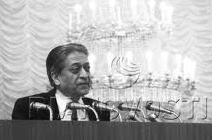

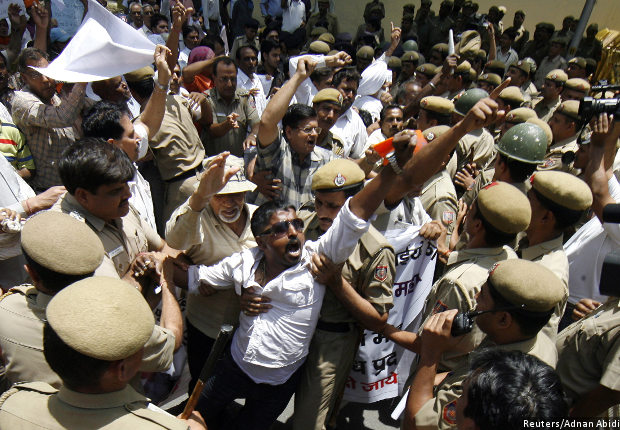
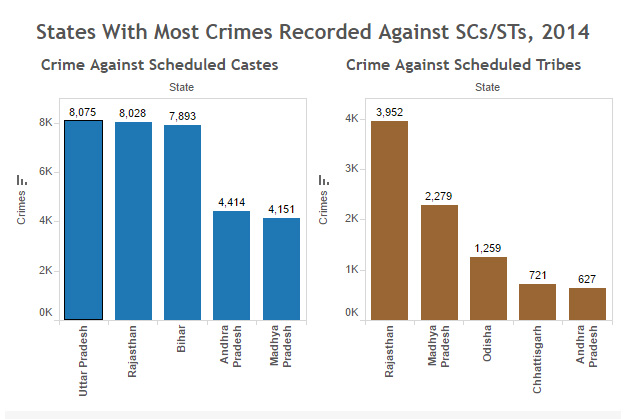
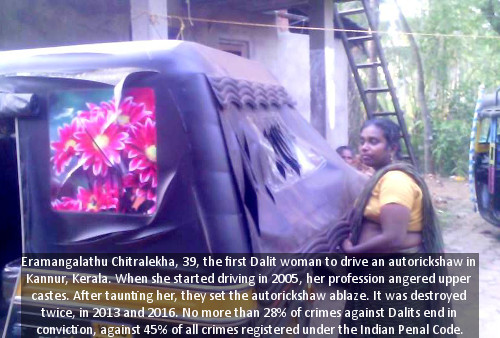
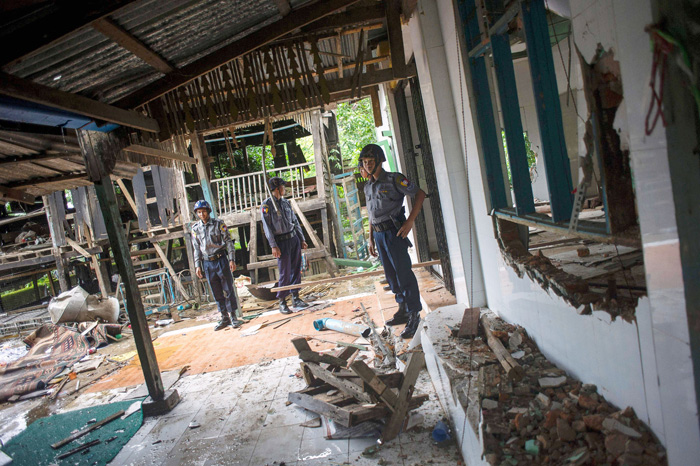
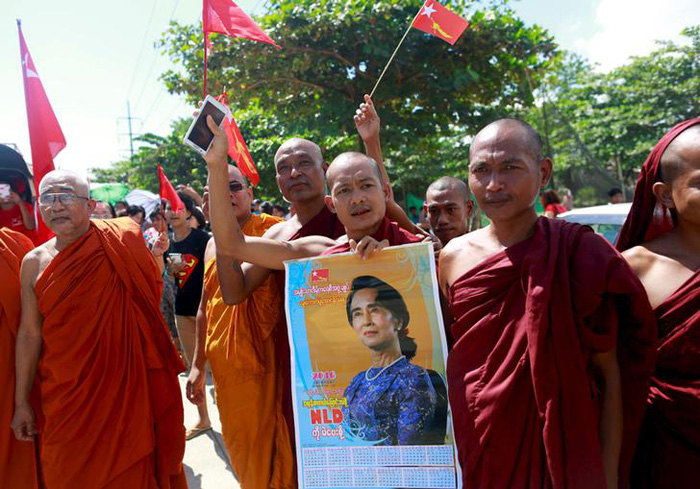
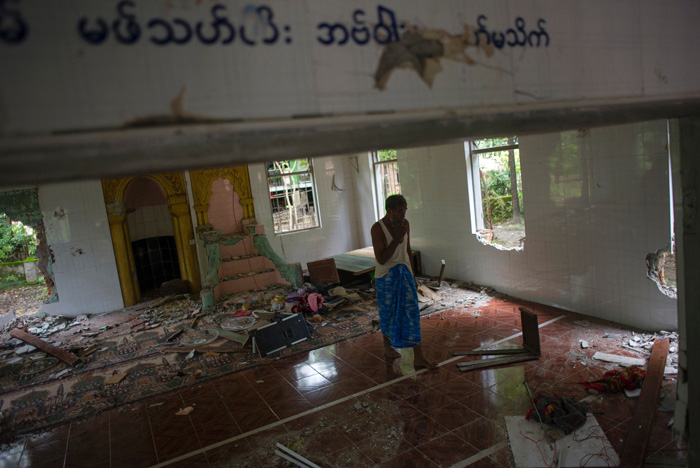

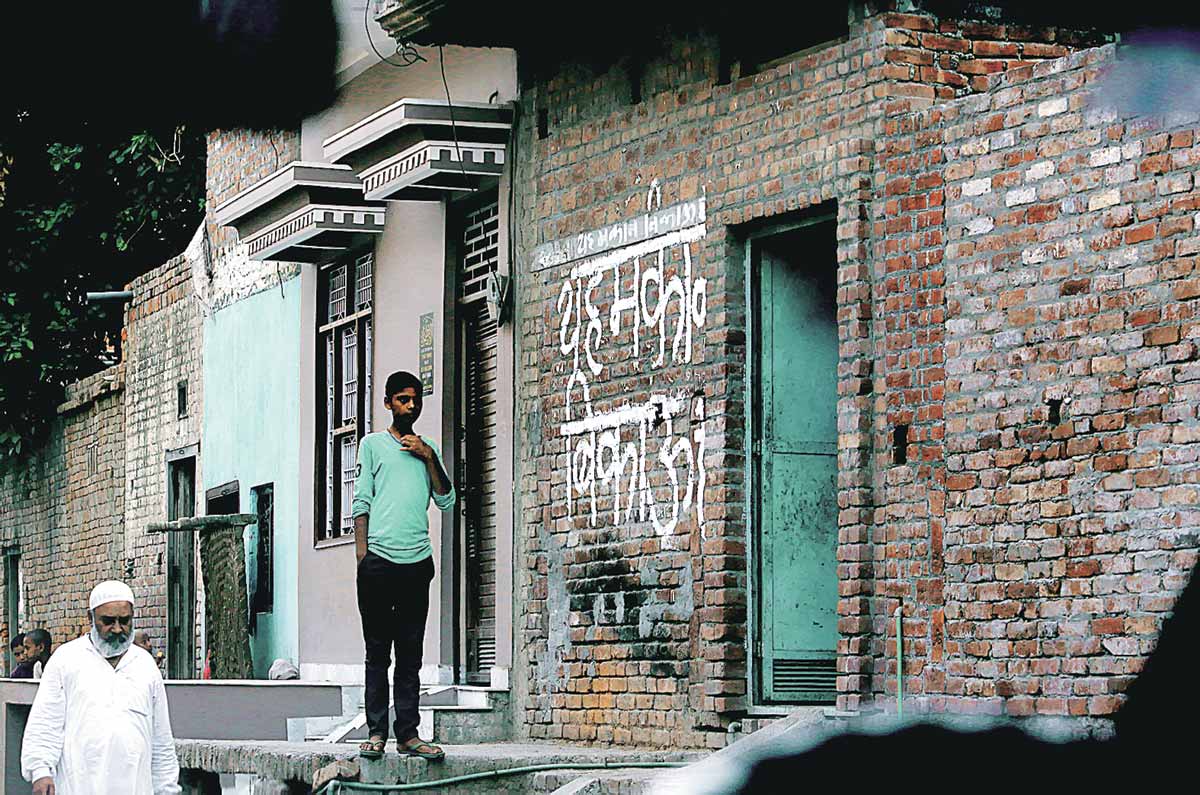
![[Zakaria Mohammed. Image from author] [Zakaria Mohammed. Image from author]](http://www.jadaliyya.com/content_images/3/zakariyya.jpg)



![[Ghada al-Samman. Image from wikipedia] [Ghada al-Samman. Image from wikipedia]](http://www.jadaliyya.com/content_images/3/alsamman.png)